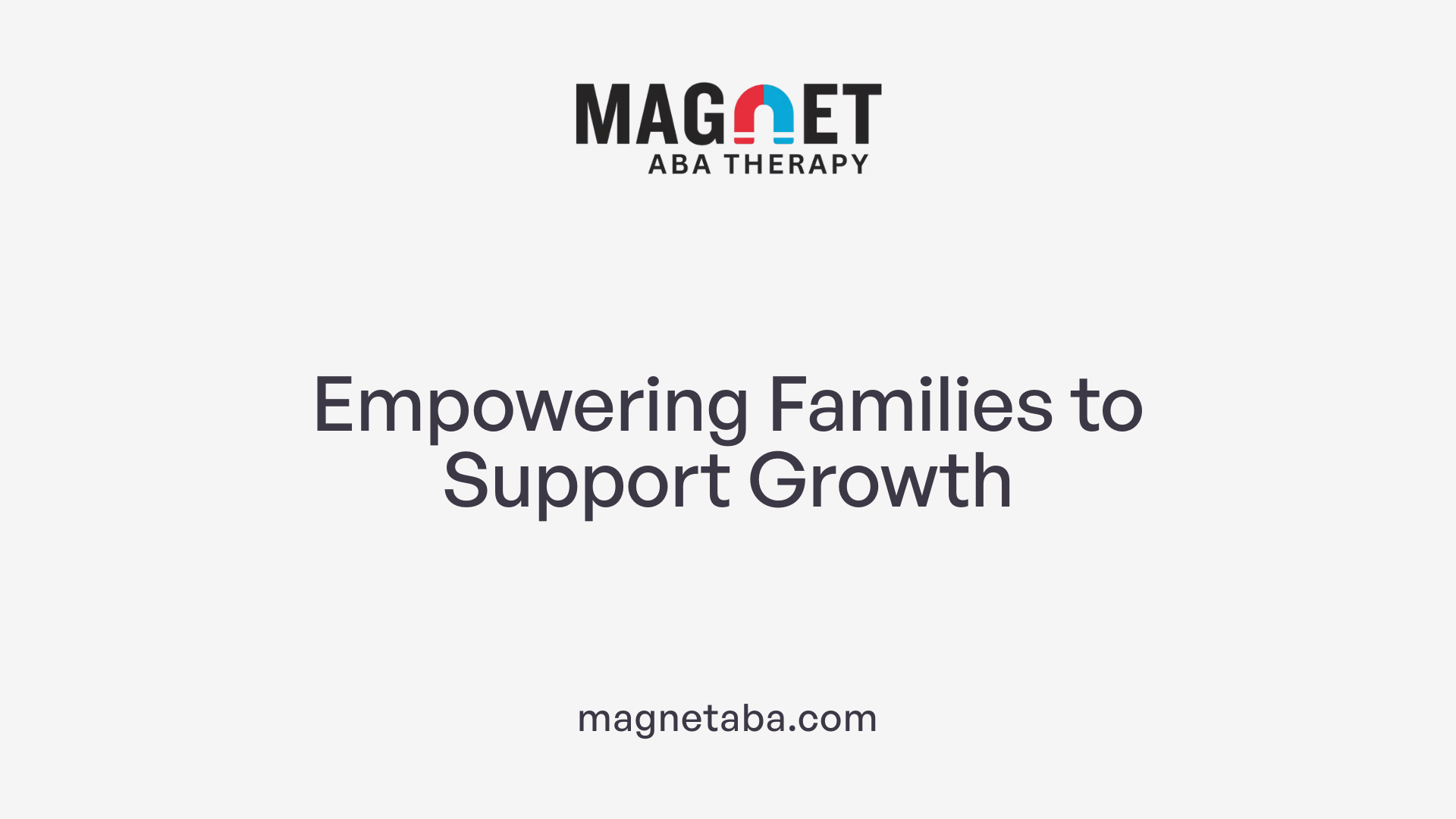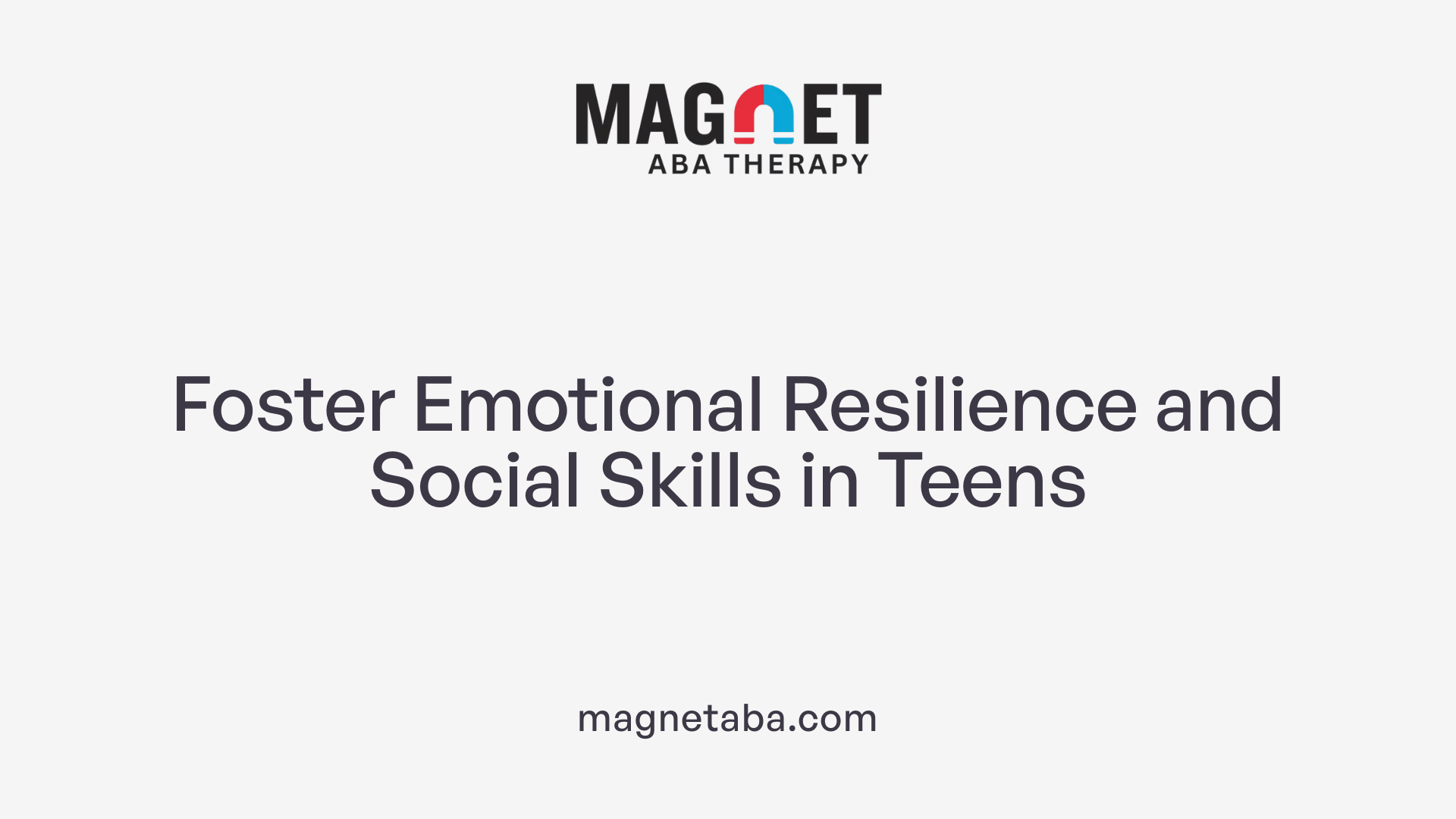Understanding the Role of ABA in Adolescent Development
Applied Behavior Analysis (ABA) is a well-established, evidence-based approach widely used to support adolescents with autism spectrum disorder (ASD). Tailored to meet each teen's unique developmental needs, ABA helps foster independence, communication, social skills, and emotional regulation, preparing teens for a successful transition into adulthood. This article explores how ABA can be adapted effectively for teenagers, highlighting strategies, techniques, and family involvement vital for meaningful progress.
Goals of ABA Therapy for Teenagers with Autism
 The primary objectives of ABA therapy for teenagers on the autism spectrum are centered around supporting their transition into more independent and socially engaged adults. One major goal is the development of daily living skills. This includes teaching teens how to perform routines such as personal hygiene, preparing simple meals, managing money, and navigating transportation systems. By mastering these skills, teens gain confidence and are better prepared for independent living.
The primary objectives of ABA therapy for teenagers on the autism spectrum are centered around supporting their transition into more independent and socially engaged adults. One major goal is the development of daily living skills. This includes teaching teens how to perform routines such as personal hygiene, preparing simple meals, managing money, and navigating transportation systems. By mastering these skills, teens gain confidence and are better prepared for independent living.
Enhancing communication abilities is another critical focus. ABA techniques aim to improve both expressive and receptive language skills. Teens learn to request items using multiple words, label objects accurately, and engage in meaningful verbal exchanges. The therapy also helps them follow instructions, understand vocabulary, and interpret social cues—skills essential for effective interactions.
Social skills development is also a priority. ABA interventions focus on teaching teens to recognize and understand emotions, respond appropriately in social settings, initiate conversations, and build peer relationships. Activities like social stories, role-playing, and modeling help teens navigate complex social dynamics and reduce feelings of social anxiety.
Community skills acquisition is supported as well. Teens are guided to recognize community helpers, adhere to safety signs, and follow societal norms. These practical skills foster functional independence and help teens actively participate in community life.
Reducing problematic behaviors is an integral part of ABA therapy. It involves identifying triggers for disruptive behaviors and teaching alternative, more adaptive responses. This dual approach of skill-building and behavior reduction promotes overall well-being and helps teens function more effectively across different environments.
Overall, ABA therapy aims to equip teenagers with autism with the necessary skills to manage daily tasks, communicate effectively, participate socially, navigate their communities, and lead more autonomous lives. These goals contribute not only to immediate skill development but also to long-term success in independent living and social integration.
Customizing ABA Interventions for Adolescents

How can ABA therapy be customized to meet the needs of adolescents with autism?
Adolescents with autism exhibit a wide range of strengths and challenges, making personalized treatment essential. High-quality ABA therapy begins with thorough assessments that identify each teen’s current skills, interests, and areas needing support.
Based on this assessment, Board Certified Behavior Analysts (BCBAs) design individualized intervention strategies. These strategies often include positive reinforcement, shaping, task analysis, and activities tailored to promote communication, social skills, and independence. For example, if an adolescent shows interest in gaming, therapy might incorporate game-based learning to enhance engagement.
Flexibility in session structure and setting is important. ABA sessions can be held at home, in community settings, or within educational environments, adapting to the teen’s routines and preferences. This naturalistic approach encourages real-world skill application.
Ongoing data collection and progress monitoring help therapists fine-tune strategies. When progress plateaus or new challenges arise, adjustments are made to goals or methods. Regular collaboration with family members, teachers, and other caregivers ensures consistency and reinforces learning across all environments.
Involving adolescents in goal-setting fosters motivation and ownership of their development. By respecting their interests and developmental pace, ABA therapy not only teaches crucial life skills but also promotes confidence, independence, and social competence.
In summary, tailoring ABA for teens involves comprehensive assessment, flexible implementation, continuous monitoring, and collaborative teamwork. This personalized approach maximizes relevance, engagement, and effectiveness, supporting each adolescent's journey toward greater independence and social integration.
Family Involvement in ABA Support

How can families support adolescents with autism through ABA therapy?
Supporting teenagers with autism in ABA therapy involves active participation and reinforcement at home and in everyday settings. Families can help by implementing strategies learned in therapy, such as encouraging communication, emotional regulation, and social interactions.
Reinforcing positive behaviors is essential. For example, parents can praise a teen for initiating conversation or managing frustration calmly. Incorporating these skills into daily routines helps the teen generalize what they learn during therapy sessions.
Creating consistent routines and providing predictable reinforcement helps teenagers feel secure and understand expectations. Using visual schedules or timers can support organization and independence.
In addition, families should collaborate closely with therapists to set realistic, personalized goals. This partnership ensures that interventions address the teen’s specific strengths, challenges, and interests. Goals might include improving social skills like taking turns or navigating new environments.
Support also extends to emotional and social development. Families can facilitate activities that promote peer interactions, such as play dates or community outings, where teens practice social skills in natural contexts.
Training caregivers on ABA strategies further boosts progress. Caregivers learn to use prompts, cues, and reinforcement techniques effectively, ensuring consistency across different environments.
Regular communication with therapists allows families to stay informed about progress and to adapt approaches as the teen grows and develops. Overall, sustained involvement creates a supportive ecosystem that encourages independence, emotional regulation, and social competence, significantly enhancing the effectiveness of ABA therapy for teenagers with autism.
Techniques to Foster Self-Advocacy and Decision-Making in Teens

What techniques are used in ABA therapy to build self-advocacy and decision-making skills in teens with autism?
ABA therapy offers a variety of effective methods to help teens with autism develop self-advocacy and decision-making abilities. These methods are grounded in evidence-based practices that focus on practical, real-world skills.
One common approach is role-playing social scenarios. In these activities, teens practice navigating situations like asking for help, expressing preferences, or making choices about daily activities. This hands-on practice builds confidence and prepares them to handle similar situations outside of therapy.
Visual supports such as choice boards and picture cards are another key tool. These visual aids help teens evaluate options, understand consequences, and make informed decisions. For example, a choice board might present options for lunch or activities, encouraging teens to communicate their preferences effectively.
Structured decision-making activities break complex choices into smaller, manageable steps. These activities often involve guiding teens through evaluating options, considering consequences, and selecting the best course of action, thus enhancing their independent thinking skills.
Reinforcement strategies play a vital role. Praise, tokens, and activity-based rewards motivate teens to practice advocacy skills and recognize their own progress. These positive reinforcements reinforce the behavior, making it more likely to recur.
In addition to direct skill training, ABA emphasizes improving communication through social stories and functional communication training. Social stories illustrate appropriate behaviors in specific situations, helping teens understand social expectations and express themselves more clearly.
Environmental generalization—applying skills learned in therapy across different settings—is also vital. Family members and community environments are involved to reinforce these skills consistently, ensuring that teens can advocate for themselves in school, at home, or in public.
Family involvement is crucial. Parents and caregivers are trained to support skill practice, provide consistent reinforcement, and encourage independence within everyday routines. Community-based instruction further aids in applying these skills in real-life settings, helping teens confidently express their needs and make choices aligned with their preferences.
Overall, these integrated ABA techniques foster the development of self-advocacy and decision-making skills, which are essential for teens to navigate social, academic, and personal situations effectively, promoting greater independence and confidence in their daily lives.
Supporting Emotional and Social Development During Adolescence

How does ABA therapy support adolescent development and transition into adulthood?
ABA therapy plays a crucial role in helping teens with autism and other developmental needs prepare for adult life. It is highly individualized, meaning each treatment plan is tailored to the teen’s strengths, interests, and personal goals. Through a variety of proven techniques, such as role-playing, task analysis, and positive reinforcement, adolescents learn important skills for independence and social integration.
One vital area ABA focuses on is emotional and social growth. During therapy, teens are guided to recognize and name their emotions, which helps them understand their feelings better. Techniques like scenario planning and resilience exercises teach them how to handle challenges calmly and adaptively. Coping strategies such as mindfulness and relaxation techniques are incorporated to help manage anxiety, frustration, or other intense emotions.
Social skills training under ABA emphasizes understanding social cues, navigating peer relationships, and managing group interactions. Through modeling, social stories, and peer-based activities, teens learn how to initiate conversations, interpret facial expressions, and respond appropriately in social settings. Such practices build their confidence and foster meaningful connections.
Promoting self-awareness and emotional regulation is also a focus. Teens are encouraged to reflect on their feelings, understand their motivations, and develop self-management skills. These abilities support their capacity to advocate for themselves, make informed decisions, and handle stress effectively.
In addition, ABA supports broader developmental goals, including academic achievement, vocational readiness, and daily living skills. Practice activities like grocery shopping, job interview preparation, and community outings offer real-world experiences that promote independence.
Long-term, ABA aims to facilitate a smooth transition from adolescence into adulthood by instilling essential skills for self-sufficiency and social participation. Family involvement, community engagement, and technology-assisted approaches enhance the effectiveness of therapy. Overall, ABA provides a comprehensive framework that supports teens in becoming confident, capable, and independent individuals ready to meet the challenges of adult life.
Fostering a Holistic Approach for Long-Term Success
Supporting adolescents through ABA is a comprehensive process that involves customizing interventions, actively engaging families, and employing targeted strategies to develop independence, social skills, and emotional resilience. By focusing on individual needs and ensuring consistency across environments, ABA can empower teens to navigate life's challenges successfully, laying a strong foundation for lifelong growth and autonomy. Collaboration among therapists, families, and community resources ensures that adolescents receive the support necessary to transition smoothly into adulthood, making ABA an invaluable tool in fostering lifelong success.
References
- Adapting ABA Therapy Strategies for Teens and Older Children
- What is ABA Therapy for Teens Really Like?
- ABA Therapy for Adolescents and Young Adults with Autism
- How ABA Therapy Can Help Teens with Autism | Spectrum of Smiles
- ABA Therapy for Teens: Empowering Adolescents with Autism
- ABA & Self-Advocacy for Teens - Therapyland
- Tips for Providing ABA to Adolescents and Older Children
- Blog: ABA Therapy for Teens - Insights on Autism Care and Support
- Can ABA help a teen on the mildly affected end of the autism ...












